by Bruce Wells | Oct 26, 2025 | Petroleum Pioneers
Oilfield service company founder and future mayor of Toledo patented a “Coupling for Pipes or Rods” in 1894.
Samuel “Golden Rule” Jones of Ohio made a fortune in oilfields and supplying equipment and services, patented an improved sucker rod for pumping oil, and created a better workplace for his factory employees. He ran on the progressive Republican ticket in 1897 and was elected mayor of Toledo. He would be reelected three times.
As the country weathered an 1890s financial crisis, Samuel M. Jones brought a new business philosophy to Toledo, Ohio. An immensely popular mayor, he was reelected in 1899, 1901, and 1903 — and served in office until dying on the job in 1904.
(more…)
by Bruce Wells | Oct 6, 2025 | This Week in Petroleum History
October 6, 1886 – Natural Gas fuels Glass Manufacturing –
A 900-foot-deep natural gas well in a cornfield near Kokomo, Indiana, led to the establishment of the Indiana Natural Gas Company, and in 1888, the Opalescent Glass Works, which has been in continuous operation since. The state’s first natural gas well was completed in 1867, seeking oil reserves (see Indiana Natural Gas Boom).
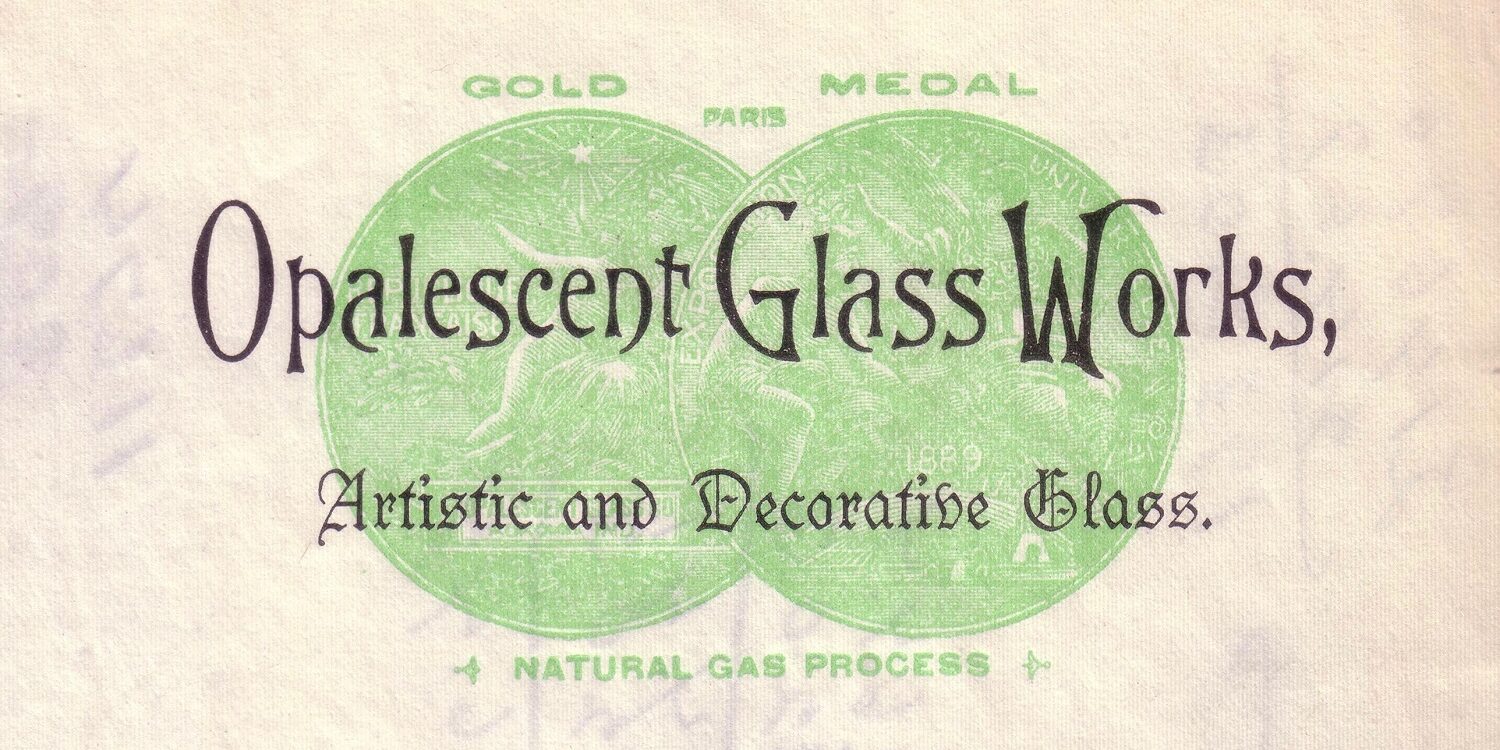
Opalescent Glass Works won a gold medal at the 1889 Exposition Universelle in Paris for its “natural gas process” glass. Photo courtesy Kokomo Opalescent Glass.
Opalescent Glass Works, today Kokomo Opalescent Glass, almost went bankrupt when natural gas supplies dwindled, but in 1893 it recovered by selling electric insulators to Edison General Electric Company — and thousands of pounds of stained glass to Tiffany studios in New York City.
October 6, 1957 – Society of Petroleum Engineers established
The first board of directors meeting of the Society of Petroleum Engineers (SPE) established the professional society in an expansion of the American Institute of Mining, Metallurgical and Petroleum Engineers (AIME), which had created a Petroleum Division in 1922.

An American Institute of Mining Engineers program led to the Society of Petroleum Engineers.
AIME began in 1871, when a small group of Pennsylvania mining engineers sought to “preserve their collective knowledge and experiences for the benefit of future engineers.” SPE has grown into an independent, nonprofit global society with 132,000 members in 146 countries.
October 7, 1859 – First U.S. Oil Well catches Fire
The wooden derrick and engine house of America’s first oil well erupted in flames along Oil Creek at Titusville, Pennsylvania. The well had been completed the previous August by Edwin L. Drake for George Bissell and the Seneca Oil Company of New Haven, Connecticut. Working with driller William “Uncle Billy” Smith, Drake used steam-powered cable-tool technology.
The first U.S. oil well fire began when Uncle Billy inspected a vat of oil with an open lamp. When the lamp’s flame set gases alight, the conflagration consumed the derrick, the stored oil, and the driller’s home. Drake and Seneca Oil Company would quickly rebuild at the already famous well site.
Learn more in First Oil Well Fire.

October 7, 2014 – 200th Anniversary of Ohio Oil Discovery
The Noble County Historical Society of Caldwell, Ohio, hosted a 200th anniversary festival and park dedication celebrating a brine well drilled with a spring pole that produced oil. The 1814 well can be found at Thorla McKee Park, named for Silas Thorla and Robert McKee, the entrepreneurs who established the local salt works, according to researcher Dave Baker in “Early Marietta.”
In 2015, Baker reported the historic well site included the remains of its original sycamore log casing beneath a replica springpole. Thoria and McKee separated the oil from the salt water by soaking it up with blankets before bottling it to sell as a medicinal potion. The remaining brine was boiled to extract the salt. In 1992, the Noble County Department of Tourism and the Ohio Historical Society dedicated a historic marker near the Caldwell site. Ohio’s first well drilled exclusively for oil was completed near Macksburg in the autumn of 1860.
October 8, 1915 – Elk Basin oilfield discovered in Wyoming
An exploratory well drilled in a remote Wyoming valley opened the giant Elk Basin oilfield. Completed by the Midwest Refining Company near the Montana border, the wildcat well produced 150 barrels of high-grade “light oil” a day. The oil needed little refining to provide quality lubricants.

“Gusher coming in, south rim of the Elk Basin field, 1917.” Photo courtesy American Heritage Center, University of Wyoming.
Geologist George Ketchum first recognized the potential of the basin as a source of oil deposits. Ketchum had explored the remote area in 1906 with C.A. Fisher while farming near Cowley, Wyoming. The Elk Basin extended from Carbon County, Montana, into northeastern Park County, Wyoming.
Fisher was the first geologist to map sections of the Bighorn Basin southeast of Cody, Wyoming, where oil seeps had been found as early as 1883. The Wyoming oilfield discovery in unproven territory attracted new ventures like Elk Basin United Oil Company, investors, and oilfield service companies.
Learn more in First Wyoming Oil Wells.

October 8, 1923 – First International Petroleum Exposition and Congress
Five thousand visitors attended the rainy opening day of the first International Petroleum Exposition and Congress in downtown Tulsa, an event that would return for almost six decades.
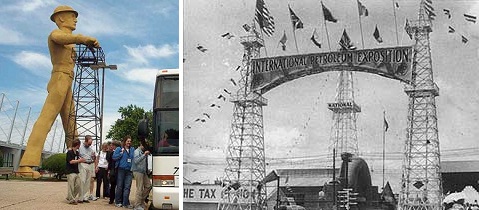
Although still a tourist attraction, the 76-foot-tall Golden Driller arrived decades after Tulsa’s first International Petroleum Exposition in 1923.
With annual attendance growing to more than 120,000, Mid-Continent Supply Company of Fort Worth introduced the original Golden Driller of Tulsa at the expo in 1953. Economic shocks beginning with the 1973 OPEC oil embargo depressed the industry, and after 57 years, the International Petroleum Exposition ended in 1979.
October 9, 1999 – Converted Offshore Platform launches Rocket
Sea Launch, a Boeing-led consortium of companies from the United States, Russia, Ukraine, and Norway, launched its first commercial rocket using the Ocean Odyssey, a modified semi-submersible drilling platform. After a demonstration flight in March, a Russian Zenit-3SL rocket carried a DirecTV satellite to geostationary orbit.
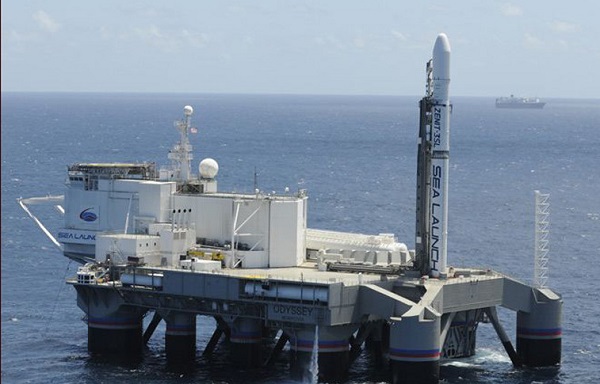
Ocean Odyssey, a modified semi-submersible drilling platform, became the world’s first floating equatorial launch pad in 1999. Photo courtesy Sea Launch.
In 1988, the former drilling platform had been used by Atlantic Richfield Company (ARCO) for North Sea explorations. The Ocean Odyssey made 36 more rocket launches until 2014, when the consortium ended after Russia illegally annexed Ukraine’s Crimean peninsula.
Learn more in Offshore Rocket Launcher.

October 10, 1865 – Oil Pipeline constructed in Pennsylvania
A two-inch iron pipeline began transporting oil five miles through hilly terrain from a well at booming Pithole, Pennsylvania, to the Miller Farm Railroad Station at Oil Creek. With their livelihoods threatened, teamsters attempted to sabotage the pipeline until armed guards intervened. A second oil pipeline would begin operating in December.

Oil tanks at the boom town of Pithole, Pennsylvania, where Samuel Van Syckel built a five-mile pipeline in 1865. Photo courtesy Drake Well Museum.
Built by Samuel Van Syckel, who had formed the Oil Transportation Association, the pipeline used 15-foot welded joints. Three 10-horsepower Reed and Cogswell steam pumps pushed the oil at a rate of 81 barrels per hour. With up to 2,000 barrels of oil arriving daily at the terminal, more storage tanks were soon added. The pipeline transported the equivalent of 300 teamster wagons working for 10 hours.
“The day that the Van Syckel pipeline began to run oil a revolution began in the business,” proclaimed Ida Tarbell in her 1904 History of the Standard Oil Company. “After the Drake well, it is the most important event in the history of the Oil Regions.”
_______________________
Recommended Reading: The Extraction State, A History of Natural Gas in America (2021); Myth, Legend, Reality: Edwin Laurentine Drake and the Early Oil Industry (2009); Where it All Began: The story of the people and places where the oil & gas industry began: West Virginia and southeastern Ohio
(2009); Where it All Began: The story of the people and places where the oil & gas industry began: West Virginia and southeastern Ohio (1994); Black Gold, Patterns in the Development of Wyoming’s Oil Industry (1997); Tulsa Where the Streets Were Paved With Gold – Images of America
(1994); Black Gold, Patterns in the Development of Wyoming’s Oil Industry (1997); Tulsa Where the Streets Were Paved With Gold – Images of America (2000); Offshore Pioneers: Brown & Root and the History of Offshore Oil and Gas
(2000); Offshore Pioneers: Brown & Root and the History of Offshore Oil and Gas (1997); Western Pennsylvania’s Oil Heritage
(1997); Western Pennsylvania’s Oil Heritage (2008); Oil and Gas Pipeline Fundamentals
(2008); Oil and Gas Pipeline Fundamentals (1993); Arizona Rocks & Minerals: A Field Guide to the Grand Canyon State
(1993); Arizona Rocks & Minerals: A Field Guide to the Grand Canyon State (2010). Your Amazon purchase benefits the American Oil & Gas Historical Society. As an Amazon Associate, AOGHS earns a commission from qualifying purchases.
(2010). Your Amazon purchase benefits the American Oil & Gas Historical Society. As an Amazon Associate, AOGHS earns a commission from qualifying purchases.
_______________________
The American Oil & Gas Historical Society (AOGHS) preserves U.S. petroleum history. Please become an AOGHS annual supporter and help maintain this energy education website and expand historical research. For more information, contact bawells@aoghs.org. Copyright © 2025 Bruce A. Wells. All rights reserved.
by Bruce Wells | May 19, 2025 | This Week in Petroleum History
May 19, 1885 – Lima Oilfield discovered in Ohio –
Ohio’s petroleum industry began when Benjamin Faurot found oil at Lima in the northwestern part of the state. He had been searching for natural gas in the prolific Trenton Rock Limestone (see Indiana Natural Gas Boom). “If the well turns out, as it looks now that it will, look out for the biggest boom Lima ever had,” proclaimed Lima’s Daily Republican newspaper.
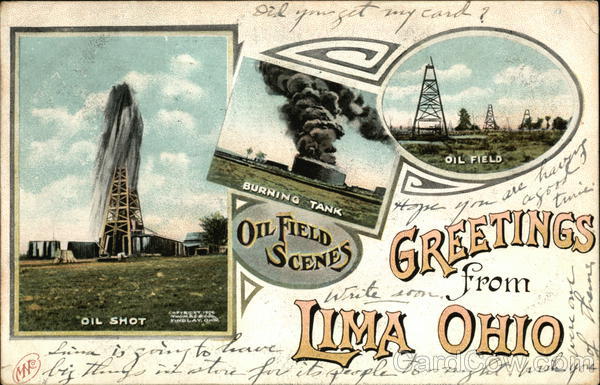
A 1919 postcard published by Robbins Bros., Boston, promotes the oil wealth of Lima, Ohio, with derricks, an oil gusher, and a burning oil tank.
Faurot organized the Trenton Rock Oil Company, and by 1886 the Lima oilfield was producing more than 20 million barrels of oil, the most in the nation. The Lima field’s heavy oil needed special refining, and Standard Oil Company of New Jersey in 1889 began construction on the Whiting refinery.
Learn more in Great Oil Boom of Lima, Ohio.
May 19, 1942 – Oklahoma Inventor patents Portable Drilling Rig
A pioneer in oilfield technologies, George E. Failing of Enid, Oklahoma, received a patent for his design of a drilling rig on a truck bed. “I designate the rear portion of a drilling rig such as used in drilling shallow wells, the taking of cores, drilling of shot-holes, and performing similar oil field operations,” Failing noted in his patent.
In 1931, he had mounted a rig on a 1927 Ford farm truck, “adding a power take-off assembly to transfer power from the truck engine to the drill,” according to the Oklahoma Historical Society. Failing would receive more than 300 patents for oilfield tools, “from rock bit cores to an apparatus for seismic surveying.”

George Failing’s rig design — powered by a pickup truck’s engine — proved ideal for rapidly drilling slanted wells.
Failing’s portable rig could drill ten slanted, 50-foot holes in a single day, while a traditional rotary rig took about a week to set up and drill to a similar depth. He demonstrated his portable drilling technology at a 1933 well disaster in Conroe, Texas, working with H. John Eastman, today considered the father of directional drilling (see Technology and the “Conroe Crater”).

May 19, 1969 – First Offshore Technology Conference
Houston’s largest convention and tradeshow, the Offshore Technology Conference, began in response to “growing technological needs of the global ocean extraction and environmental protection industries,” according to History of OTC. In 2013, more than 2,700 companies exhibited in “an area equivalent to 10 U.S. football fields.”
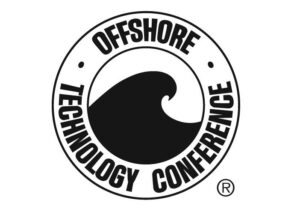
Since 1969, the conference has generated more than $3.2 billion for Houston. OTC Brasil was launched in 2011 along with an Arctic Technology Conference (2011-2016). OTC Asia was launched in 2012. The next Houston OTC will take place May 4-7, 2026.
May 20, 1930 – Geophysicists establish Professional Society
Earth scientists in Houston established the Society of Economic Geophysicists to encourage the ethical practice of geophysics in the exploration and development of natural resources. The organization in 1937 adopted the name Society of Exploration Geophysicists (SEG), which in 2024 reported 14,000 members in 114 countries.
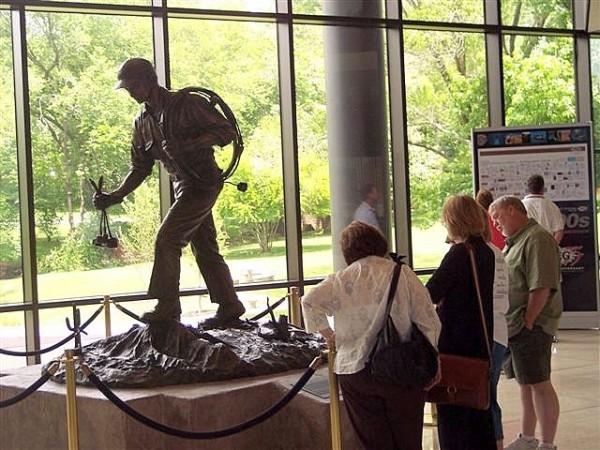
The Doodlebugger by Oklahoma sculptor Jay O’Melia has welcomed visitors to SEG headquarters since 2002. Photo by Bruce Wells.
SEG’s journal Geophysics began publishing in 1936 with articles on exploration technologies, including seismic, gravity, and magnetic imaging. The journal warned of hucksters using vague or unproven properties of oil and geological formations. At its Tulsa headquarters in 2002, SEG unveiled The Doodlebugger, a 10-foot bronze statue by Oklahoma sculptor Jay O’Melia, who also sculpted the Oil Patch Warrior, a World War II memorial.
May 21, 1923 – “Esso” first used by Standard Oil Company
For the first time, Standard Oil Company of New Jersey used “Esso” to market the company’s “refined, semi-refined, and unrefined oils made from petroleum, both with and without admixture of animal, vegetable, or mineral oils, for illuminating, burning, power, fuel, and lubricating purposes, and greases.”

Standard Oil of New Jersey logo, 1923 to 1934, when text became plainer and inside an ellipse.
In 1923, Esso — the phonetic spelling of the abbreviation “S.O.” for Standard Oil — became a registered trademark. The future children’s book author Theodor Geisel — Dr. Seuss — began drawing Essolube product ads in the 1930s. Exxon (now ExxonMobil) removed its U.S. Esso brand in 1973.
May 23, 1905 – Patent issued for Improved Metal Barrel Lid
Henry Wehrhahn, superintendent for the Iron Clad Manufacturing Company of Brooklyn, New York, received the first of two 1905 patents that presaged the modern 55-gallon oil drum. The first design included “a means for readily detaching and securing the head of a metal barrel.”
Wehrhahn assigned his patent rights to the widow of Robert Seaman, founder of Iron Clad Manufacturing, Elizabeth Cochrane Seaman — journalist Nellie Bly. In December 1905, Wehrhahn also assigned her the rights to his improved metal barrel patent.
Learn more in Remarkable Nellie Bly’s Oil Drum.

May 23, 1937 – Death of World’s Richest Man
Almost 70 years after founding Standard Oil Company in Ohio and 40 years after retiring from the company in 1897, John D. Rockefeller died in Ormond Beach, Florida, at age 97. His petroleum empire had peaked in 1912.
Born on July 8, 1839, in Richford, New York, Rockefeller attended high school in Cleveland, Ohio, from 1853 to 1855. He became an assistant bookkeeper with a produce shipping company before forming his own company in 1859 — the same year of the first U.S. oil well in Pennsylvania. Rockefeller was 24 in 1865 when he took control of his first refinery, which would be the largest in the world three years later.
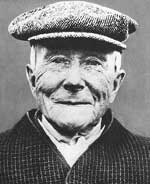
John Rockefeller, 1839-1937. Photo courtesy of Cleveland State University.
By the time his petroleum fortune peaked at $900 million in 1912 ($29.7 billion in 2025 dollars), Rockefeller’s philanthropy was well known. His unprecedented wealth funded the University of Chicago, the Rockefeller Institute for Medical Research, (now the Rockefeller Foundation), and Spelman College in Atlanta.
May 24, 1902 – Oil & Gas Journal published
Holland Reavis founded the Oil Investors’ Journal In Beaumont, Texas, to report on financial issues facing operators and investors in the giant oilfield discovered nearby one year earlier at Spindletop Hill. Reavis sold his semimonthly publication to Patrick Boyle of Oil City, Pennsylvania, in 1910.
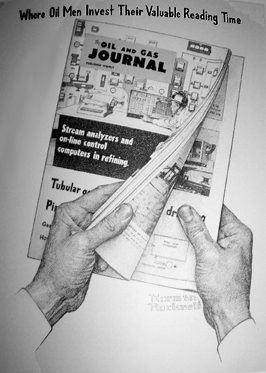
Norman Rockwell illustrated a 1962 ad promoting the Oil and Gas Journal.
Boyle, a former oilfield scout and publisher of the Oil City Derrick, increased publication frequency to weekly and renamed it the Oil & Gas Journal. Following his death in 1920, son-in-law Frank Lauinger moved operations to Tulsa and further expanded the company, which became PennWell Publishing in 1980. The Derrick newspaper in Oil City, which began in 1885, continues to be published by the Boyle family.

May 24, 1920 – Huntington Beach Oilfield discovered in California
A Standard Oil Company of California exploratory well discovered the Huntington Beach oilfield. The beach town’s population grew from 1,500 to 5,000 within a month of the well drilled at Clay Avenue and Golden West Street.

A forest of derricks crowd the Huntington Beach in 1926. The giant oilfield produced more than 16 million barrels of oil in 1964 alone and totaled more than one billion barrels by 2000. Photo courtesy Orange County Archives.
The field had 59 producing wells with daily production of 16,500 barrels of oil by November 1921. The activity brought national attention to Huntington Beach and renewed interest in the Los Angeles City oilfield.
By 2000, the giant oilfield had produced more than one billion barrels of oil, according to the Orange County Register, which noted that as production peaked, “the pressure of explosive population growth began pushing the wells off land that had become more valuable as sites for housing.”
_______________________
Recommended Reading: Ohio Oil and Gas (2008); History Of Oil Well Drilling (2007); Careers in Geophysics
(2007); Careers in Geophysics (2017); Offshore Pioneers: Brown & Root and the History of Offshore Oil and Gas
(2017); Offshore Pioneers: Brown & Root and the History of Offshore Oil and Gas (1997); A Geophysicist’s Memoir: Searching for Oil on Six Continents
(1997); A Geophysicist’s Memoir: Searching for Oil on Six Continents (2017); Nellie Bly: Daredevil, Reporter, Feminist
(2017); Nellie Bly: Daredevil, Reporter, Feminist (1994); Titan: The Life of John D. Rockefeller, Sr.
(1994); Titan: The Life of John D. Rockefeller, Sr. (2004); Giant Under the Hill: A History of the Spindletop Oil Discovery
(2004); Giant Under the Hill: A History of the Spindletop Oil Discovery (2008); Huntington Beach, California, Postcard History Series
(2008); Huntington Beach, California, Postcard History Series (2009). Your Amazon purchase benefits the American Oil & Gas Historical Society. As an Amazon Associate, AOGHS earns a commission from qualifying purchases.
(2009). Your Amazon purchase benefits the American Oil & Gas Historical Society. As an Amazon Associate, AOGHS earns a commission from qualifying purchases.
_______________________
The American Oil & Gas Historical Society preserves U.S. petroleum history. Please become an annual AOGHS supporter and help maintain this energy education website and expand historical research. For more information, contact bawells@aoghs.org. Copyright © 2025 Bruce A. Wells. All rights reserved.
by Bruce Wells | Feb 4, 2025 | Petroleum Companies
A 1954 well drilled by the Ohio Oil Company reached more than four miles deep.
Founded in 1887 by Henry M. Ernst, the Ohio Oil Company got its exploration and production start in northwestern Ohio, at the time a leading oil-producing region. Two years later, John D. Rockefeller’s Standard Oil Trust purchased the growing company — known as “The Ohio” — and in 1905 moved headquarters from Lima to Findlay.
Soon establishing itself as a major pipeline company, by 1908 the Ohio controlled half of the oil production in three states. The company resumed independent operation in 1911 following the dissolution of the Standard Oil monopoly. The new Ohio Oil’s exploration operations expanded into Wyoming and further westward.
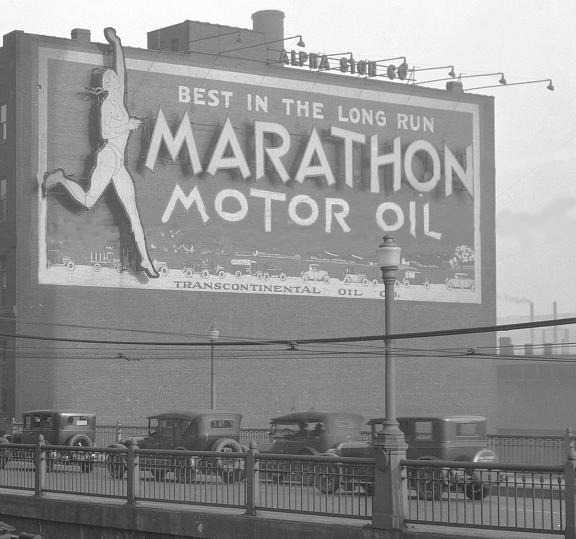
The Ohio Oil Company in 1930 purchased Transcontinental Oil, a refiner that had marketed gasoline under the trademark “Marathon” since 1920. Photo courtesy Library of Congress.
By 1915, the company’s infrastructure had added 1,800 miles of pipeline as well as gathering and storage facilities from its newly acquired Illinois Pipe Line Company. The Ohio then purchased the Lincoln Oil Refining Company to better integrate and develop more crude oil outlets.
“Ohio Oil saw the increasing need for marketing their own products with the ever-increasing supply of automobiles appearing on the primitive roads,” explained Gary Drye in a 2006 forum at Oldgas.com.

The company ventured into marketing in June 1924 by purchasing Lincoln Oil Refining Company of Robinson, Illinois. With an assured supply of petroleum, the Ohio Oil’s “Linco” brand quickly expanded.

The Ohio Oil Company marketed its oil products as “Linco” after purchasing the Lincoln Oil Refinery in 1920. Undated photo of a station in Fremont, Ohio.
Meanwhile, a subsidiary in 1926 co-discovered the giant Yates oilfield in the Permian Basin of New Mexico and West Texas. “With huge successes in oil exploration and production ventures, Ohio Oil realized they needed even more retail outlets for their products,” Drye reported. By 1930, the company distributed Linco products throughout Ohio, Indiana, Illinois, Michigan and Kentucky.
Marathon of Ohio Oil
In 1930 Ohio Oil purchased Transcontinental Oil, a refiner that had marketed gasoline under the trademark “Marathon” across the Midwest and South since 1920. Acquiring the Marathon product name included the Pheidippides Greek runner trademark and the “Best in the long run” slogan.

Adopted in 2011, the third logo for corporate branding in Marathon Oil’s 124-year history.
According to Drye, Transcontinental “can best be remembered for a significant ‘first’ when in 1929 they opened several Marathon stations in Dallas, Texas in conjunction with Southland Ice Company’s ‘Tote’m’ stores (later 7-Eleven) creating the first gasoline/convenience store tie-in.”

The Marathon brand proved so popular that by World War II the name had replaced Linco at stations in the original five-state territory. After the war, Ohio Oil continued to purchase other companies and expand throughout the 1950s.
Ohio Oil’s California Record
As deep drilling technologies continued to advance in the 1950s, a record depth of 21,482 feet was reached by the Ohio Oil Company in the San Joaquin Valley of California.
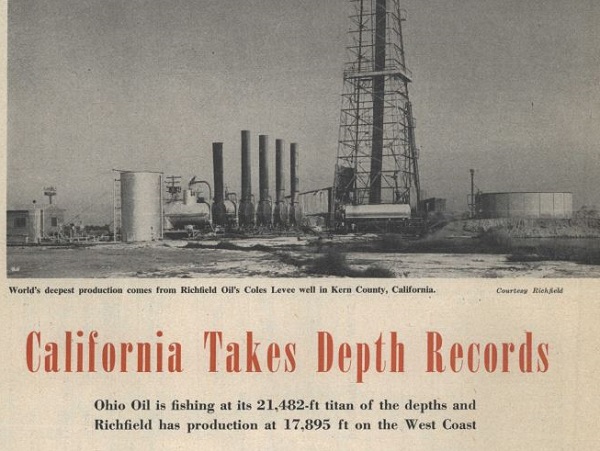
Petroleum Engineer magazine in 1954 noted the well set a record despite being “halted by a fishing job.”
The deep oil well drilling attempt about 17 miles southwest of Bakersfield in prolific Kern County, experienced many challenges. A final problem led to it being plugged with cement on December 31, 1954. At more than four miles deep, down-hole drilling technology of the time was not up to the task when the drill bit became stuck.
The challenge of retrieving obstructions from deep in a well’s borehole – “fishing” – has challenged the petroleum industry since the first tool stuck at 134 feet and ruined a well spudded just four days after the famous 1859 discovery by Edwin Drake in Pennsylvania (see The First Dry Hole).

In a 1954 article about deep drilling technology, The Petroleum Engineer noted the Kern County well of Ohio Oil — which would become Marathon Oil — set a record despite being “halted by a fishing job.” The well was a financial loss.
A 1953 Kern County well drilled by Richfield Oil Corporation produced oil from a depth of 17,895 feet, according to the magazine. At the time, the average U.S. cost for the nearly 100 wells drilled below 15,000 feet was about $550,000 per well. Learn more California petroleum exploration history by visiting the West Kern Oil Museum.
More than 630 exploratory wells with a total footage of almost three million feet were drilled in California during 1954, according to the American Association of Petroleum Geologists — the AAPG, established in 1917.
In 1962, celebrating its 75th anniversary, The Ohio changed its name to Marathon Oil Company and launched its new “M” in a hexagon shield logo design. Other milestones include:
1981 – U.S. Steel (USX) purchased the company.
1985 – Yates field produced its billionth barrel of oil.
1990 – Marathon opened headquarters in Houston.
2005 – Marathon became 100 percent owner of Marathon Ashland Petroleum LLC, which later became Marathon Petroleum Corp.
2011 – Completed a $3.5 billion investment in the Eagle Ford Shale play in Texas.

On June 30, 2011, Marathon Oil became an independent upstream company and unveiled an “energy wave” logo as it prepared to separate from Marathon Petroleum, based in Findlay. Read a more detailed history in Ohio Oil Company and visit the Hancock Historical Museum in Findlay.
On May 29, 2024, Marathon Oil announced it was being acquired by ConocoPhillips in an all-stock transaction valued at $22.5 billion.
______________________________
Recommended Reading: Portrait in Oil: How Ohio Oil Company Grew to Become Marathon (1962). Your Amazon purchase benefits the American Oil & Gas Historical Society. As an Amazon Associate, AOGHS earns a commission from qualifying purchases.
(1962). Your Amazon purchase benefits the American Oil & Gas Historical Society. As an Amazon Associate, AOGHS earns a commission from qualifying purchases.
______________________________
The American Oil & Gas Historical Society (AOGHS) preserves U.S. petroleum history. Please become an AOGHS annual supporter and help maintain this energy education website and expand historical research. For more information, contact bawells@aoghs.org. Copyright © 2025 Bruce A. Wells. All rights reserved.
Citation Information – Article Title: “Marathon of Ohio Oil.” Authors: B.A. Wells and K.L. Wells. Website Name: American Oil & Gas Historical Society. URL: https://aoghs.org/stocks/marathon-ohio-oil. Last Updated: February 3, 2025. Original Published Date: December 28, 2014.
by Bruce Wells | Jan 6, 2025 | Offshore History
As the turn of the century approached, oil producing Ohio wells drilled far out over a reservoir mark the beginning of America’s offshore petroleum industry, according to Mercer County historians.
America’s first offshore drilling once was generally acknowledged to be over Louisiana’s Caddo Lake in 1911 – until researchers in Mercer and Auglaize counties in Ohio said otherwise.
Oil patch sleuths pointed to Mercer County documents recording wells producing oil above the waters of Grand Lake St. Marys at least 20 years before drillers ventured over the waters of Caddo Lake above the giant Caddo-Pine Island field. (more…)























